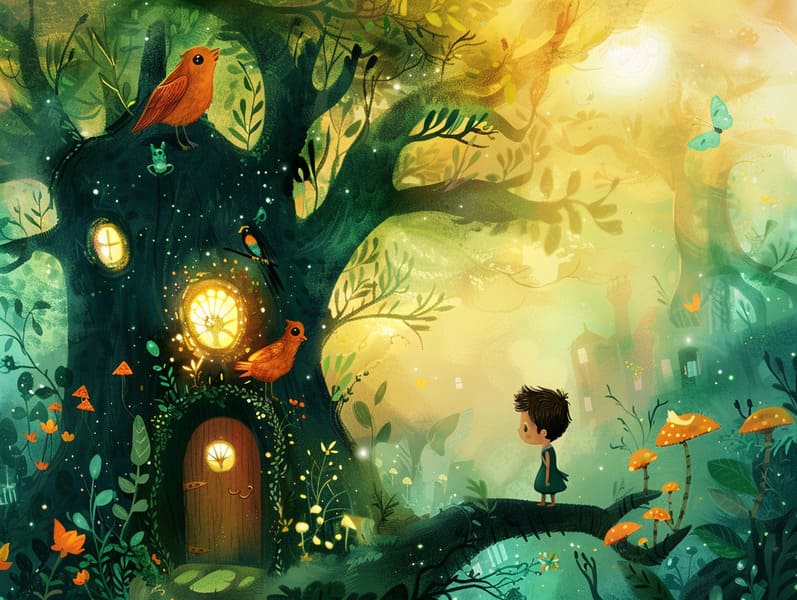A Brief History of Fairy Tales to Read and Their Undying Allure.
A Brief History of Fairy Tales to Read and Their Undying Allure.
Blog Article

Best fairy tales have old origins. These tales have been shared from one generation to the next millennia before they were ever documented. They arose from a variety of backgrounds, including African traditions. They were initially told among grown-ups, often carrying themes and messages related to the societal norms and beliefs of the time.
The Brothers Grimm, Jacob and Wilhelm (the Grimm brothers), were among the first to collect many of these beloved narratives. Their published works, "Grimm's Story Collection," included stories like "The Little Glass Slipper," "Hansel and Grethel," and "The True Story of Snow White," which have since become hallmarks in the world of famous fairy tales. Similarly, Andersen's fanciful tales, such as "The Sea Maid," and "The Ugly Duckling," have captured hearts worldwide, guaranteeing their place in the pantheon of famous fairy tales.
Despite being ancient, these stories remain as relevant as ever, especially as children's bedtime stories. These delightful tales are now available in many formats, including richly illustrated books, charming animations, and internet fairy tales.
Their ongoing significance can be traced to several whimsical characteristics:
Vital Lessons: Traditional fairy tales often share important moral lessons. Tales like "The Boy Who Cried Wolf" teach the merit of truth, while "The Hare and the Tortoise" illustrate the benefits of persistence and meekness. These narratives offer kids clear distinctions between good and bad, guiding their moral compass in a gentle yet lasting way.
Empathy and Understanding: Old fairy tales frequently include heroines facing challenges and problems, urging children to resonate with their struggles and root for their triumphs. For instance, "Beauty's Beast" highlights the benefit of looking deeper to see the inner being of a being, advancing perception and perception.
Cultural Comprehension: Many classic fairy tales are rich in the cultural contexts from which they blossomed. Reading these stories can provide illuminating insights into different traditions, strengthening a sense of international awareness and acknowledgment.
Inventiveness and Imagination: The fantasy-filled elements in classic fairy tales—magic wands—kindle children’s visions. These tales lead readers to fantasy realms, promoting innovative ideas and a sense of fascination that remains a lifetime.
Old fairy tales are not only fantastical but also edifying. They act as fantastical tools in cultivating various thinking and feeling skills in children. When timeless fairy tales are spoken, they advance speaking abilities by bringing new vocabulary and complex sentence structures. This practice also fosters auditory skills and attention span, as young readers keep up with the story, anticipating to see what happens next.
Furthermore, analyzing the themes and characters of fairy tales can promote cognitive skills and intellectual skills. Little ones learn to notice patterns, foresee events, and know cause and effect. These discussions also advance the young articulate their thoughts and feelings, boosting their emotional intelligence.
In today’s high-tech era, the proliferation of web-based fairy tales has made these stories more within reach than ever. Internet sites and online apps make available vast collections of timeless fairy tales that can be experienced or listened via anytime, anywhere. Fairy tales read out loud are particularly in demand, providing an engaging way for young readers to savor these spellbinding stories. Read-aloud books and read-to-me videos move characters and settings to life, often enhanced by captivating music and songs that augment the narrative experience.
The everlasting appeal of timeless fairy tales lies in their ability to adjust to modern days while keeping their main lessons. Contemporary versions of these narratives often feature more inclusive figures and modern settings, making them understandable to today’s audience. However, the main ideas read more of valour, warmth, and justness remain unchanged, continuing to touch listeners of all ages.
Old fairy tales also offer a sense of assurance and recognition. They impart a well-arranged narrative with a evident beginning, middle, and end, often closing with the conclusion of conflicts and the triumph of right over wrong. This foreseeability can be relieving for young readers, yielding a sense of constancy in an dynamic world.
Old fairy tales continue to enchant and coach new generations, maintaining their loveliness and impact in modern society. As nighttime stories for kids, they give a perfect blend of fantasy and learning, encouraging moral values, empathy, and creativity. The proliferation of web-based fairy tales and the prevalence of fairy tales voiced assure that these timeless stories remain available to new generations.
By perpetuating and imparting these stories, we continue to glorify the rich tapestry of narrative artistry and cultural heritage. Whether you are browsing a gorgeously illustrated book, enjoying a virtual collection, or listening via an voice book, the mystique of traditional fairy tales is always within reach. These narratives demonstrate of the immortal spell of tales and its ability to join us across centuries and lands.
No matter if you are delving into a colorful picture book, perusing a digital library, or listening on an read-aloud book, the loveliness of popular fairy tales is always within reach.
These stories point out of the undying spell of stories and its ability to gather us across epochs and places, casting a charm that delights and instructs alike.